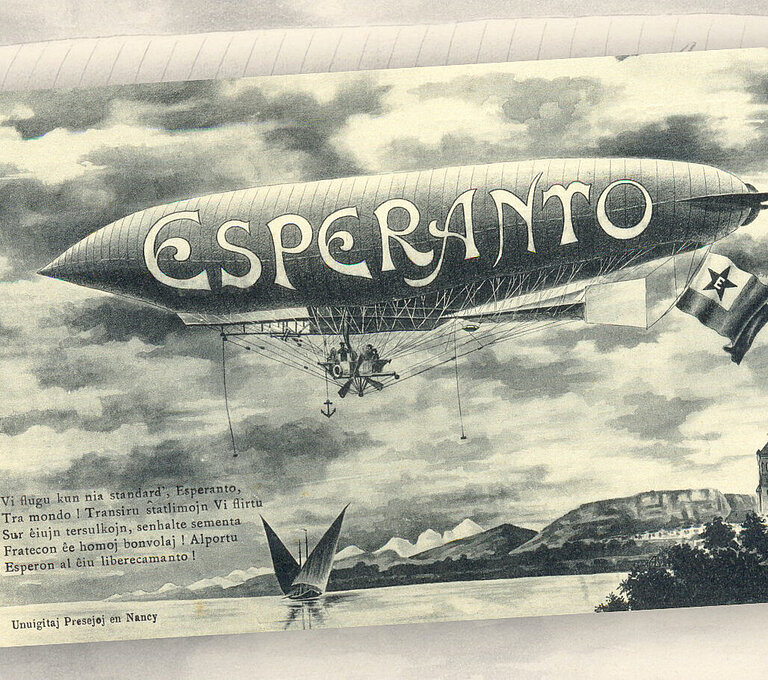Bonvenon! Welcome!
The Austrian National Library's Department of Planned Languages is home to the world’s largest specialist library for interlinguistics, documenting around 500 planned languages. In addition to Esperanto, the most important planned language in the world today, these also include Volapük, Ido, Interlingua and many others. In the department’s reading room you can discover a whole host of books and magazines in planned languages, multifaceted archives and impressive musical recordings and films.
Ĉu en Esperanto?
Supre je la dekstra flanko vi povas iri al la Esperanto-versio!
Esperanto and beyond: about the Department of Planned Languages
Ever since it was founded in 1927, the Esperanto Museum at the Austrian National Library has held an extensive library, which was given the name “Department of Planned Languages” in 1990. Planned languages – languages that are deliberately created according to specific criteria – are the subject of the scientific discipline that has been known since the start of the 20th century as interlinguistics.
Subdivided by document type, the library holds about 40,000 flyers, 40,000 printed volumes, 25,000 newspaper articles, 22,000 photographs, 20,000 handwritten texts and manuscripts, 4100 journals, 3500 museum artefacts, 1600 posters and 1200 sound recordings.
The history of the Department of Planned Languages
- In 1927, Court Councillor Hugo Steiner (1878–1969) founded the “International Esperanto Museum” in Vienna, which was incorporated into the Austrian National Library in 1928. According to Steiner, the idea of founding an Esperanto Museum arose during the 19th World Esperanto Congress in Danzig in 1927 and dates back to Felix Zamenhof (1868–1933), a brother of the founder of Esperanto, Ludwik Zamenhof (1859–1917).
- In 1929, the new department was officially opened with a grand ceremony in the Austrian National Library's State Hall.
- Following the annexation of Austria, the collection was closed in 1938 and the books in it were about to be included in the library of undesirable books that was planned for Berlin. Because they were the property of the Austrian National Library, it was possible to stop them from being removed.
- In 1947, the collection reopened in the Hofburg Palace near Michaelerplatz.
- In 2005, the move to Palais Mollard (Vienna 1, Herrengasse 9) meant an extensive physical and administrative new start for the collection, with perfect conditions being created in secure, climate-controlled rooms not only for the library but also for the archive material and museum items.
Thank you for your understanding that our blog posts are available in German only.
Due to a legally required works meeting, all user facilities of the Austrian National Library (reading rooms at Heldenplatz and collections) will not open until 11.30 a.m. on Thursday, 21 November, 2024.
Please note the opening hours during the holidays.


